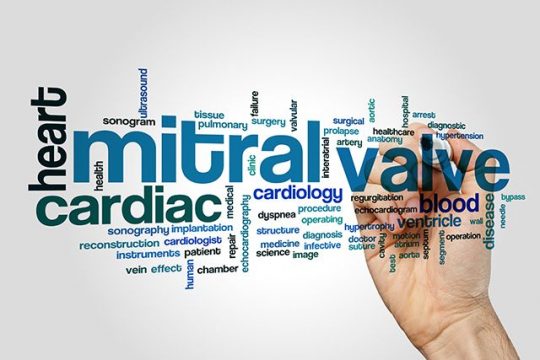Mitral valve regurgitation (MR) is a common cause behind heart failure and is associated to hospitalization for heart failure and higher mortality.

Transcatheter edge-to-edge repair (TEER), together with guideline-directed medical therapy (GDMT) has been shown beneficial in high risk patients, according to the COAPT study. However, there is a significant group of patients that make poor candidates for this strategy and, at present, transcatheter mitral valve replacement (TMVR) might be considered a valid alternative, even though there are no randomized studies available.
This study compared CHOICE MI high risk MR patients undergoing TMVR with dedicated devices (since they made poor TEER candidates) against COAP patients receiving GDMT.
After propensity score matching, 97 pairs of patients were selected.
Clinical primary end point was all cause death, cardiovascular death and hospitalization for heart failure at 2 years.
Read also: Aortic Stenosis and Cardiogenic Shock: Is TAVR an Option?
Mean age was 73, 58% were men, 28% had diabetes, 20% had COPD, half had atrial fibrillation, 55% prior MI, 70% CAD, 48% prior PCI, 32,5% prior CABG, 6% prior TAVR or SAVR, 20% peripheral vascular disease, 14% prior stroke or TIA and 47% had an estimated GF rate 30 ml/min.
Most patients were in functional class III-IV and had been hospitalized the year before. Surgical risk assessed by EuroSCORE was 6%.
Ejection fraction was 36% on average; all patients presented severe MI, EROA was 40 mm and there were no significant differences in ventricular diameter, PASP or tricuspid regurgitation.
At 30 days, there were no significant differences in mortality (5.2% vs. 2.1%, p=0.25 for TEER and GDMT respectively).
There were no significant differences in clinical primary end point at 2 years (50.6% versus 67.1%; HR, 0.73 [95% CI, 0.49–1.11]; p=0.14 for TEER and GDMT). Neither were there differences in all-cause mortality (36.8% vs. 40.8%, p=0.98), cardiovascular mortality (24.9% vs. 32.7%, p=0.58) or the combination of cardiovascular mortality and hospitalization for heart failure (46.4% vs. 63.7%, p=0.10). However, there was lower incidence of hospitalization for cardiac failure in TEER patients, vs. GDMT (32.8% vs. 54.4%, p=0.04).
Even though both groups improved their functional class, TMVR patients saw greater improvement both at 1 and 2 years.
At 2 years, patients receiving the dedicated device showed reduced MR and ventricular volume, but there were no differences in ejection fraction.
Conclusion
This observational study comparing transcatheter mitral valve replacement with dedicated devices (mainly via transapical approach) vs. guideline directed medical therapy in patients with secondary mitral valve regurgitation at 2 year followup, showed significant MR reduction, improved symptoms and lower hospitalization rate for heart failure, with similar mortality.

Dr. Carlos Fava.
Member of the Editorial Board of SOLACI.org.
Original Title: Transcatheter Mitral Valve Replacement Versus Medical Therapy for Secondary Mitral Regurgitation: A Propensity Score–Matched Comparison.
Reference: Sebastian Ludwig, et al. Circ Cardiovasc Interv. 2023;16:e013045. DOI: 10.1161/CIRCINTERVENTIONS.123.013045.
Subscribe to our weekly newsletter
Get the latest scientific articles on interventional cardiology





